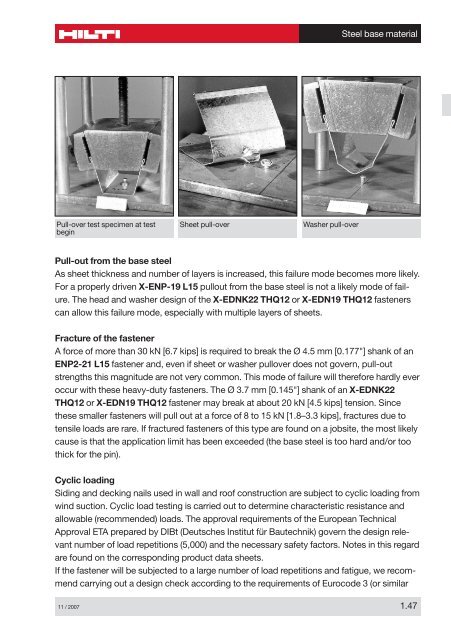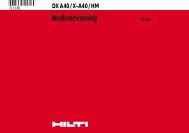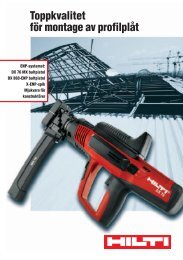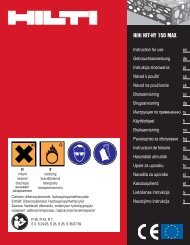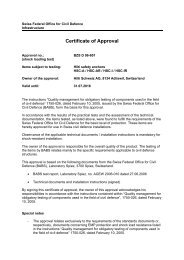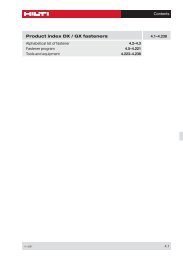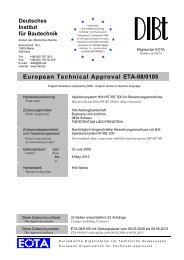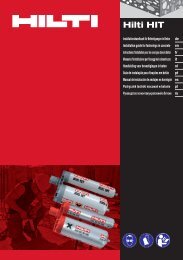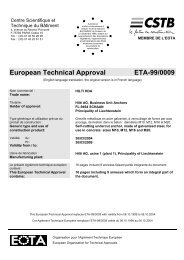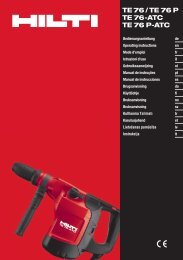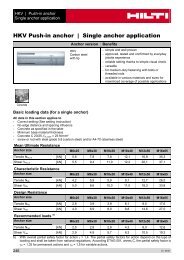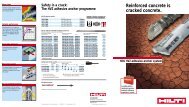00 Contents - Hilti Svenska AB
00 Contents - Hilti Svenska AB
00 Contents - Hilti Svenska AB
Create successful ePaper yourself
Turn your PDF publications into a flip-book with our unique Google optimized e-Paper software.
Pull-over test specimen at test<br />
begin<br />
Sheet pull-over Washer pull-over<br />
Steel base material<br />
Pull-out from the base steel<br />
As sheet thickness and number of layers is increased, this failure mode becomes more likely.<br />
For a properly driven X-ENP-19 L15 pullout from the base steel is not a likely mode of failure.<br />
The head and washer design of the X-EDNK22 THQ12 or X-EDN19 THQ12 fasteners<br />
can allow this failure mode, especially with multiple layers of sheets.<br />
Fracture of the fastener<br />
A force of more than 30 kN [6.7 kips] is required to break the Ø 4.5 mm [0.177"] shank of an<br />
ENP2-21 L15 fastener and, even if sheet or washer pullover does not govern, pull-out<br />
strengths this magnitude are not very common. This mode of failure will therefore hardly ever<br />
occur with these heavy-duty fasteners. The Ø 3.7 mm [0.145"] shank of an X-EDNK22<br />
THQ12 or X-EDN19 THQ12 fastener may break at about 20 kN [4.5 kips] tension. Since<br />
these smaller fasteners will pull out at a force of 8 to 15 kN [1.8–3.3 kips], fractures due to<br />
tensile loads are rare. If fractured fasteners of this type are found on a jobsite, the most likely<br />
cause is that the application limit has been exceeded (the base steel is too hard and/or too<br />
thick for the pin).<br />
Cyclic loading<br />
Siding and decking nails used in wall and roof construction are subject to cyclic loading from<br />
wind suction. Cyclic load testing is carried out to determine characteristic resistance and<br />
allowable (recommended) loads. The approval requirements of the European Technical<br />
Approval ETA prepared by DIBt (Deutsches Institut für Bautechnik) govern the design relevant<br />
number of load repetitions (5,<strong>00</strong>0) and the necessary safety factors. Notes in this regard<br />
are found on the corresponding product data sheets.<br />
If the fastener will be subjected to a large number of load repetitions and fatigue, we recommend<br />
carrying out a design check according to the requirements of Eurocode 3 (or similar<br />
11 / 2<strong>00</strong>7 1.47


